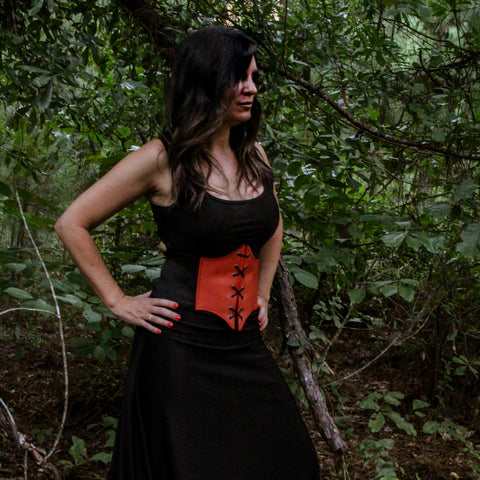Reviving Elegance: Exploring the History of the Renaissance Corset
In the realm of fashion, certain garments have left an indelible mark, shaping not only how people dress but also reflecting the values and ideals of their time. One such iconic piece is the Renaissance corset, an exquisite garment that defined the fashion landscape of the 15th and 16th centuries. Join us on a captivating journey through history as we delve into the origins, evolution, and cultural significance of the Renaissance corset.
Origins and Early Development: The roots of the corset can be traced back to ancient civilizations, where women would use various supportive undergarments to shape their bodies. However, it was during the Renaissance that the corset as we know it today began to take shape. Initially, it was known as a "stays" or a "pair of bodies" and was primarily worn as a supportive undergarment to achieve the fashionable silhouette of the time.
The Renaissance Silhouette: The ideal Renaissance silhouette for women was characterized by a high, rounded bosom, a narrow waist, and wide hips. The corset played a pivotal role in achieving this desired shape. Made from stiffened fabrics, such as linen or later, whalebone, the corset was structured to provide support, lift, and define the bust while cinching the waist.
The Evolution of Style: As the Renaissance period progressed, the corset began to evolve both in terms of functionality and aesthetics. It became a symbol of status and was intricately decorated with embroidery, lace, or even precious jewels. The desire for a more exaggerated shape led to the development of a "busk," a long, rigid piece placed vertically at the center-front of the corset to further enhance the bust and emphasize the slender waist.
The Cultural Significance: The Renaissance corset not only shaped the physical appearance of women but also reflected the cultural norms and ideals of the time. It embodied the notion of feminine modesty, emphasizing a woman's virtuous qualities and demure nature. Moreover, the corset symbolized social status and wealth, as its embellishments and intricacies required skilled artisans to create.
Controversies and Criticisms: As with any fashion trend, the Renaissance corset was not without its controversies. Some argued that the corset was an instrument of oppression, as its tight lacing could potentially cause health issues, restrict movement, and hinder women's autonomy. However, it is essential to note that historical evidence suggests that the level of constriction varied, and women had agency in their choices regarding corsetry.
Legacy and Revival: With the advent of new fashion trends and changing societal values, the prominence of the Renaissance corset gradually waned. However, it left an enduring impact on fashion history, influencing future iterations of corsetry and undergarments. In recent years, there has been a revival of corsetry, with designers reimagining and incorporating elements of the Renaissance corset into contemporary fashion, celebrating its timeless allure.
The Renaissance corset stands as a testament to the power of fashion to shape cultural norms and ideals. From its humble origins as a supportive undergarment to its elevation as a symbol of elegance and status, the corset played a vital role in defining the Renaissance silhouette. While its use has evolved over time, the Renaissance corset continues to captivate our imagination, reminding us of the rich history and artistry behind one of fashion's most iconic garments.










